Gum Disease Treatment – Longmont, CO
Gum Disease Treatment with Periodontal Therapy
Gum disease (also known as periodontal disease) is an infection that affects your gums and the bone underneath that supports your teeth. It’s actually one of the most common health problems on the planet, and nearly 80% of the population is suspected to be a victim of it. Many people aren’t even aware they have it because the early stages are so harmless, but this can quickly change – advanced gum disease is the leading cause of tooth loss in America, after all. With Dr. Dan Maurer’s support, patients can fight the good fight against periodontal disease and keep their smiles healthy with gum disease treatment here in Longmont, CO. Contact Longmont Complete Dentistry today to schedule appointments for the whole family.

Why Choose Longmont Complete Dentistry for Gum Disease Treatment?
- Focused on Early Diagnosis & Treatment
- Dental Sedation Available
- We Accept Dental Insurance
Signs of Gum Disease
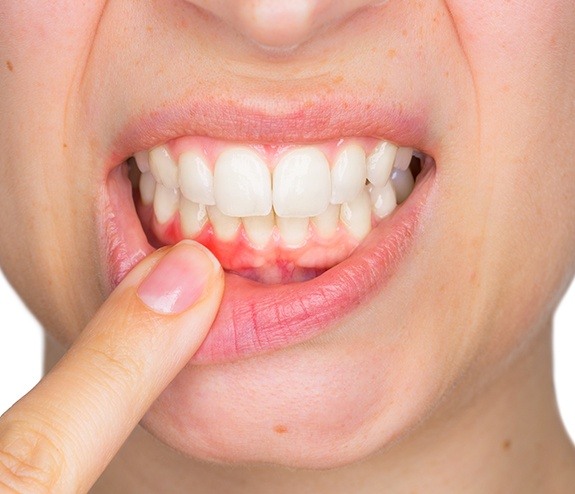
Keep an eye out for the following symptoms:
- Your gums bleed when you brush or floss your teeth.
- Your gum tissue looks suspiciously red or swollen. It could also be tender to the touch.
- Bad breath is a common issue, even just after you’ve brushed/flossed/used mouthwash.
- Your teeth look longer, which is a sign that the gum tissue is receding.
- Certain teeth or your overall bite feels strangely different.
How Serious Is Gum Disease?
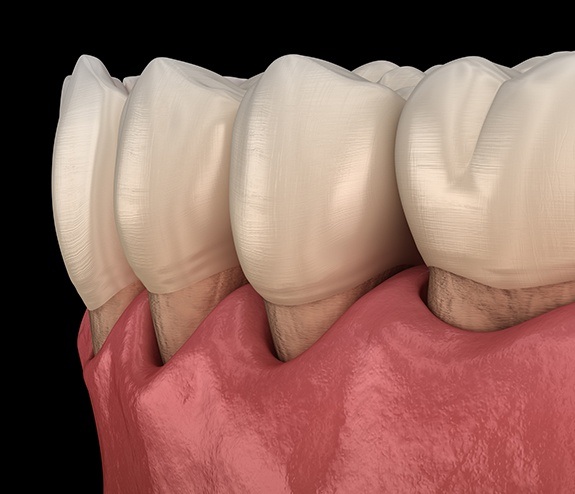
This bacterial infection hides within your gum tissue, destroying teeth and gums. When left untreated, it can even impact your overall health and wellness. It’s estimated that up to 70% of tooth loss is attributed to this common oral condition Recent studies show a significant link between people with gum disease and those who suffer from heart attacks, strokes, and complications with diabetes or pregnancy. Gum disease often starts out with little to no symptoms, which is why regular checkups with Dr. Dan are so crucial in diagnosing the condition in its early stages before it does irreversible damage.
Possible Causes of Gum Disease
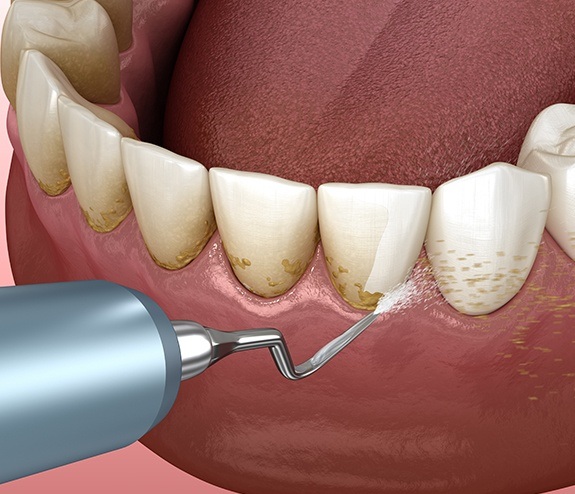
Several factors can contribute to the development of periodontal disease, like plaque buildup, lifestyle choices, and genetics, to name a few. By far the most common and controllable factor is plaque accumulation, a sticky film of normal oral bacteria that forms in your mouth every day. It can be removed with regular brushing and flossing, but when you neglect your oral hygiene, plaque hardens into a substance called tartar, which can only be removed by a dental professional. Tartar contains lots of bacteria that can build up and attack your gums, causing inflammation and eventually periodontal disease, which is an advanced stage of gum disease.
Scaling and Root Planing
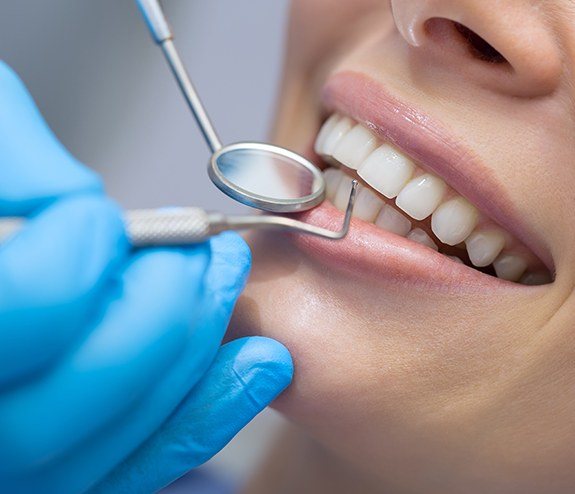
Other than dental decay, gum disease can be a potential threat to the rest of your smile if it’s left unchecked. Fortunately, our team can provide one of the most common and effective treatments for treating this situation: scaling and root planing. With these two techniques, we’ll not only remove plaque and tartar from around your teeth and gum lines, but we’ll also make it incredibly difficult for bacteria to accumulate in these areas again in the long run.
Do I Need Scaling & Root Planing?

In the majority of cases, you might require scaling and root planing if you begin to experience one or some of the following signs of gum disease:
- Swollen gums
- Noticeable plaque/tartar build-up
- Receding gum line
- Bleeding while brushing or flossing
- Chronic halitosis (bad breath)
Also known as a “deep cleaning,” scaling and root planing are highly recommended if you’re experiencing issues with the above indications of gum disease. Although you can typically address the early stages of periodontal problems with at-home oral hygiene, more serious conditions will be better treated with a deeper cleaning to prevent bacteria from worsening. With routine dental checkups, we can detect these indications early on.
The Process of Scaling & Root Planing
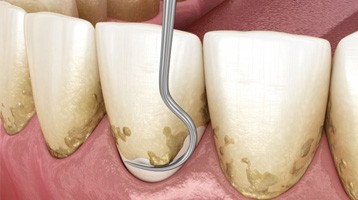
To treat gum disease, Dr. Dan will perform what is known as a “deep cleaning,” which consists of scaling and root planing. Scaling, the first part of the process, involves using special tools to remove any hardened plaque from above and below the gumline. Then, with root planing, we will smooth out the roots of the teeth to discourage bacteria from accumulating there and encourage the teeth to properly reattach to the gum tissue.
Aftercare Tips for Scaling & Root Planing

Before our team begins your procedure, we’ll first completely numb your mouth with a local anesthetic so that you’re pain-free throughout your visit. After your appointment, you’ll want to avoid eating anything solid so that you don’t accidentally bite your cheek or tongue due to the numbing agent. Most patients feel sore and tender for a few days following their procedure, so you’ll want to rinse your mouth carefully with salt water frequently throughout the day.
Steps to Take if You Believe You Have Gum Disease

Visiting our dental office is a good place to start for patients from Berthoud or Boulder, CO and surrounding areas. Attending regular checkups is the best way for you to stop the spread of gum disease in its tracks, and you can rest assured that Dr. Dan takes this threat extremely seriously. If we locate signs of an infection, scaling and root planing might be recommended. This in-depth cleaning will target the dangerous bacteria that like to gather under the gum line and on the surfaces of your tooth roots. By getting rid of them, we help our patients stay healthier and happier.
